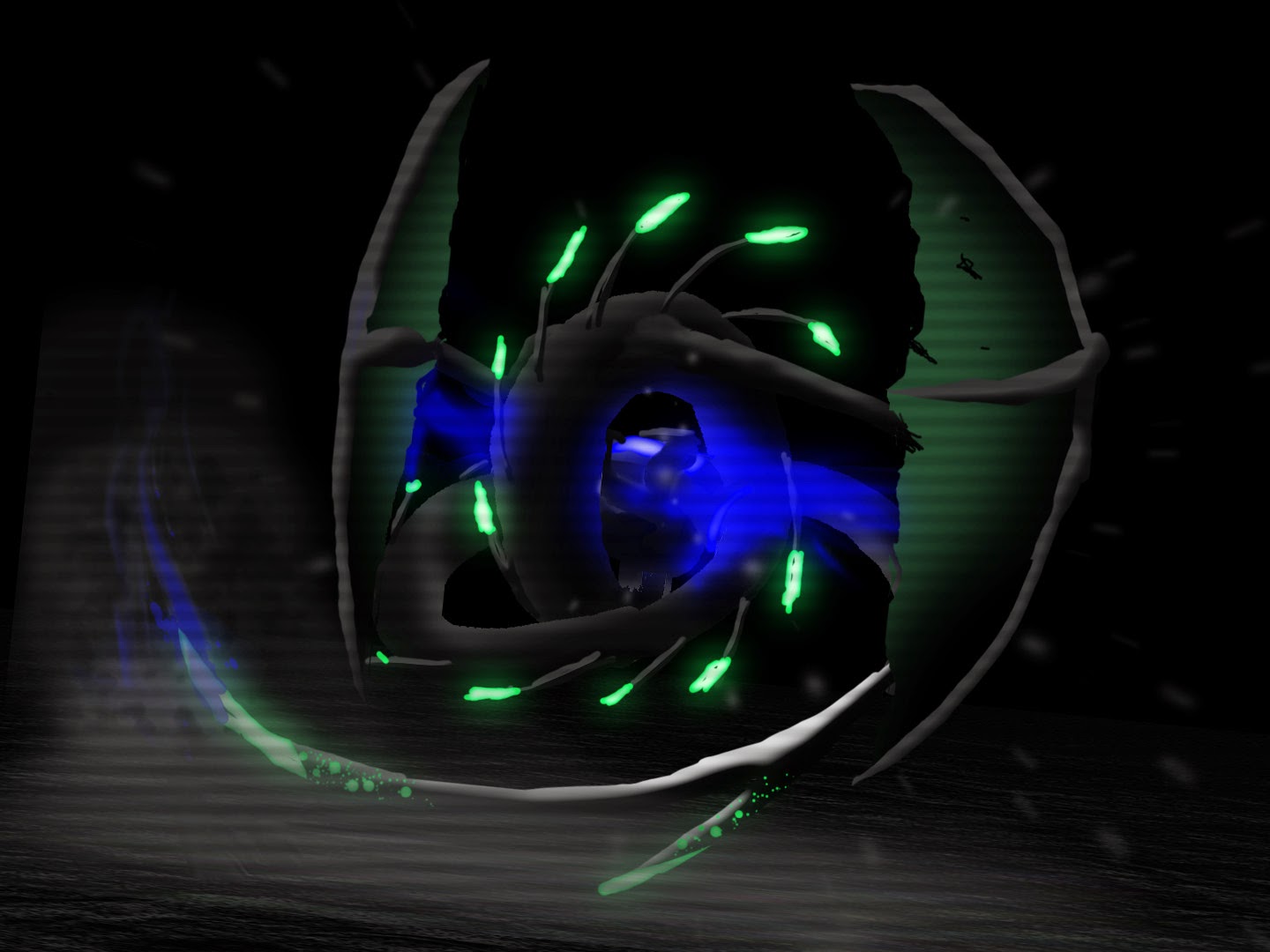Orpheus Mission- the Cloaked Spiretip
Submission for the 2014 Creature Cabal
BREAKING NEWS!
At 8 pm on Sunday, October 26, the Orpheus was able to send an hour of broadcast. According to their report, there was no discernible reason why their transmission stopped, only that something utterly massive passed the sensors beforehand. No external damage was done to the vessel, though, so discovery and documentation can resume.
One of the countless new species discovered by the Orpheus was this bizarre eel-like cephalopod. The first glimpses we saw of it were muffled by its massive, translucent fins. Almost acting like wings, it most likely covers itself to disguise its bioluminescent colors, making it look far off to the weaker-eyed fishes. As prey moves closer, it violently unfurls and whips the creature with its vicious stinger. If the prey escapes, it is soon slowed down by the venom. As soon as it is captured, the spiretip handles it with its tentacled mouth, slowly digesting it and injecting the nutrients into its mouth.
The lead biologist, Dr. Gerald Cooper, has made a point of mentioning the barbs on its back. The number of these varies from individual to individual, leading to several hypotheses. One is that they are like antlers, showing signs of the animals maturity to mates. A more likely solution, though, is that they are young grown from ovaries on the Spiretip's back. It is also entirely possible that these are venomous barbs as well, and that they were broken off when some carnivore attacked it.
Unfortunately, after this hour, the team once again went silent. This time, though, before the blackout, there was a violent crashing noise outside of the submersible. At this point, we are still trying to resume contact.
Rendered in Photoshop
BREAKING NEWS!
At 8 pm on Sunday, October 26, the Orpheus was able to send an hour of broadcast. According to their report, there was no discernible reason why their transmission stopped, only that something utterly massive passed the sensors beforehand. No external damage was done to the vessel, though, so discovery and documentation can resume.
One of the countless new species discovered by the Orpheus was this bizarre eel-like cephalopod. The first glimpses we saw of it were muffled by its massive, translucent fins. Almost acting like wings, it most likely covers itself to disguise its bioluminescent colors, making it look far off to the weaker-eyed fishes. As prey moves closer, it violently unfurls and whips the creature with its vicious stinger. If the prey escapes, it is soon slowed down by the venom. As soon as it is captured, the spiretip handles it with its tentacled mouth, slowly digesting it and injecting the nutrients into its mouth.
The lead biologist, Dr. Gerald Cooper, has made a point of mentioning the barbs on its back. The number of these varies from individual to individual, leading to several hypotheses. One is that they are like antlers, showing signs of the animals maturity to mates. A more likely solution, though, is that they are young grown from ovaries on the Spiretip's back. It is also entirely possible that these are venomous barbs as well, and that they were broken off when some carnivore attacked it.
Unfortunately, after this hour, the team once again went silent. This time, though, before the blackout, there was a violent crashing noise outside of the submersible. At this point, we are still trying to resume contact.
Rendered in Photoshop


Comments
Post a Comment
Thank you very much for your thoughts! If you have questions, we will attempt to reach back to you within the next few days.